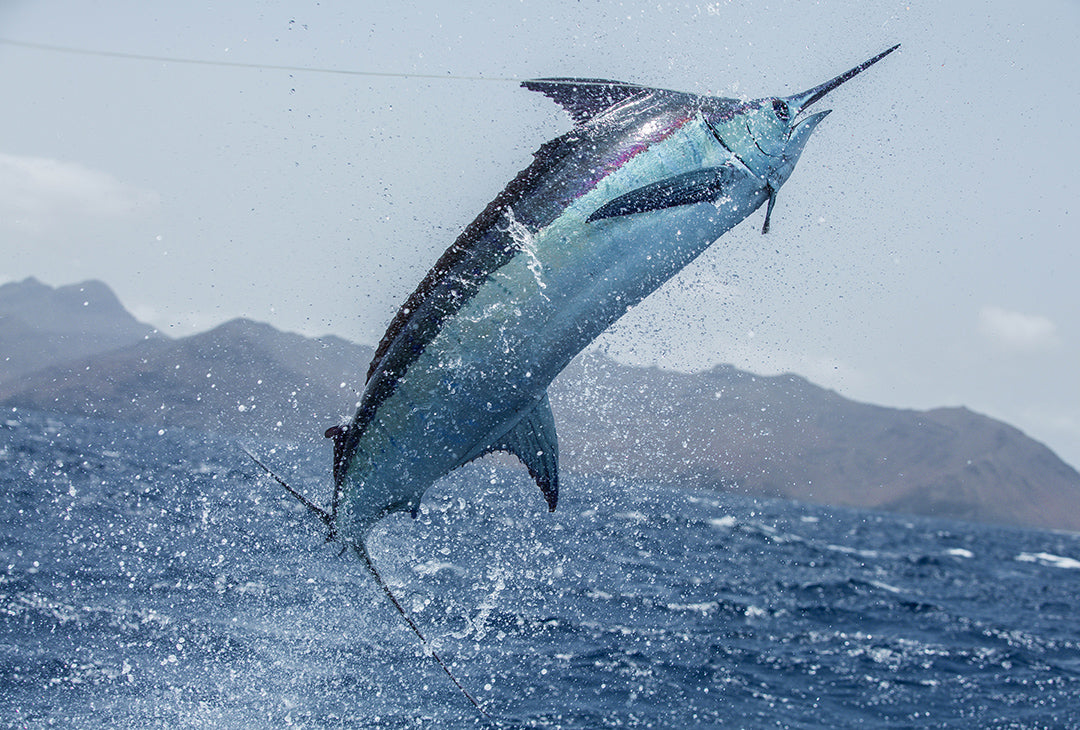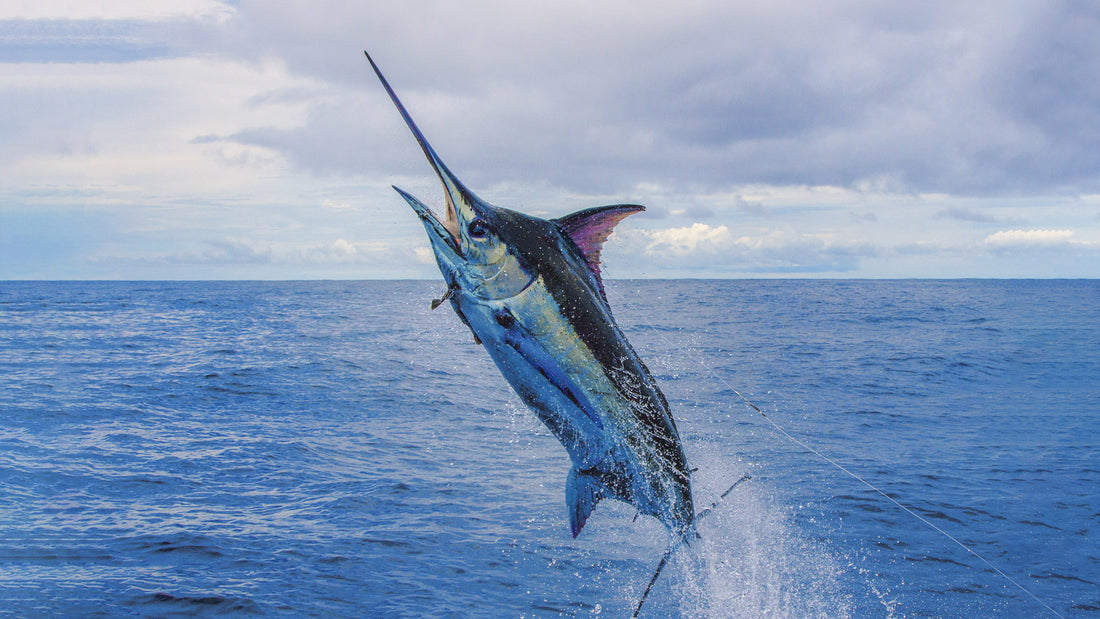 Of all the pelagic fish species in our oceans, none is more revered and respected than the blue marlin. Highly regarded amongst offshore fishing enthusiasts for its big game value, Makaira nigricans is one of the open ocean’s largest, fastest, and strongest predators reaching known weights of over 1,800-pounds and lengths of more than 16-feet while putting on amazing aerial acrobatics when hooked.
Of all the pelagic fish species in our oceans, none is more revered and respected than the blue marlin. Highly regarded amongst offshore fishing enthusiasts for its big game value, Makaira nigricans is one of the open ocean’s largest, fastest, and strongest predators reaching known weights of over 1,800-pounds and lengths of more than 16-feet while putting on amazing aerial acrobatics when hooked.
Blue marlin release aboard MARLIN MAGIC II off Kona, Hawaii (Captain Marlin Parker / Image by Carol Lynne)
The IGFA lists the All-Tackle (Atlantic) Blue Marlin record at 1,402-pounds caught off Vitoria, Brazil in February 1992 by angler, Paolo Roberto Amorim, aboard the 30’ Duda Mares. However, much larger marlin have been landed, including the world’s largest known blue marlin to date – “Choy’s Monster”.
A marlin of literal monstrous proportions, 'Choy's Monster' claims fame as the largest of its kind at 1,805-pounds
On June 10, 1970, Captain Cornelius Choy, along with his daughter, Gail Choy-Kaleiki, departed Kewalo Harbor (Honolulu, Oahu, Hawaii) for a chartered afternoon of sport fishing aboard the 48’ Coreene C hoping to catch a marlin for their clients. They returned with a fish of legend, shocking the fishing world with an 1,805-pound blue marlin, a feat that has not been surpassed in over fifty years.
Blue marlin hooked not far off the rugged coast of Cape Verde Islands, Africa (Captain Stuart Simpson)
Blue marlin are members of the billfish family, known for their sword-like bill that grows from its head front. Using this bill to stun or kill their prey, marlin will rapidly slash their heads when in attack mode or feeding to debilitate their target. Like many pelagic bony fishes, blue marlin start out as microscopic larvae, no more than a few millimeters long and weighing only a few hundredths of a gram. They grow quickly, and during their lives may increase their body weight by a million times over to reach “grander” status, which sport fishermen classify as a marlin of 1,000-plus-pounds.
Pelagic Pro Team Captain Marlin Parker & crew with a 1,035-lb. 'grander' caught in 2019 off Kona, Hawaii
Blue marlin feed on a wide variety of prey throughout their lifetimes. At a young age, they eat tiny zooplankton, and as they grow so does the prey they typically feast on. As adults, blue marlin will primarily eat bony fishes like tunas and mahi-mahi, as well squids.
Incoming! A bucking blue shows us it's business end during a high-intensity aerial display (Captain Stuart Simpson)
The blue marlin is a highly migratory species, with individuals migrating across entire ocean basins and even between multiple oceans, preferring warm tropical or sub-tropical zones and currents. Scientifically the same species, blue marlin are categorized by the main body of water they live in, hence classifications of Atlantic and Pacific Blue Marlins. Like many migratory species, females are typically larger than males. In fact, adult female blue marlin are as much as four times the size of the largest males.
The appropriately-named 'Kona Blue' hooked up off the Kona coast of Hawaii's Big Island (Image by Captain Kevin Hibbard)
As noted, blue marlin are one of the most highly-regarded species by big game sport fishing enthusiasts with passionate anglers traveling the globe in search of the coveted billfish. A few hot spot regions for blue marlin include: Kona (Hawaii), Cabo San Lucas (Mexico), Costa Rica’s Pacific coast, Australia's Eastern Seaboard, and many of the French Polynesian Islands of the South Pacific region [Pacific Blue Marlin]; and Cape Verde Islands (Africa), Madeira Island (Portugal), Bermuda, The United State’s Mid-Atlantic region, and the many islands of the Caribbean Sea [Atlantic Blue Marlin].
Available in most tropical and sub-tropical waters around the globe, this blue marlin was released off Australia's Gold Coast (Captain Luke Fallon / Image by Kelly Dalling Fallon)
Blue Marlin are caught by recreational fishermen using many techniques and fishing styles including live bait and lure while primarily employing heavy tackle rod and reel tackle with stout leader material. However, arguably the best tactic in any given region when targeting large blue marlin is by trolling a spread of specific marlin lures in warm, offshore waters near banks or bottom contour curves and ledges with bait presence to entice a blue marlin bite. More on that next week, as we hear from Pelagic Pro Team Captain, Kevin Hibbard [Kona, Hawaii], on his tips & tricks for marlin success. Stay tuned!
Tagged and released to fight another day, as the majority of blue marlin recreationally caught on rod and reel are released once boat-side (Captain Stuart Simpson)
Photography courtesy of Adrian Gray (header), Carol Lynne, Stuart Simpson, Kevin Hibbard, & Kelly Dalling Fallon.
Back to stories